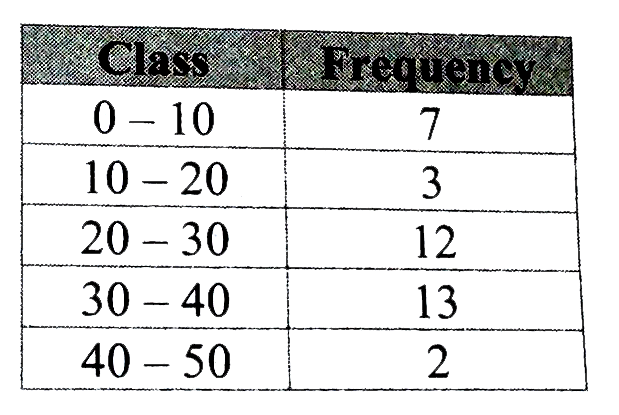The cumulative frequency of the largest observed value must always be :
Less than the total number of observations
Greater than the total number of observation
Equal to total number of observation
Equal to mid point of the last class interval
The correct Answer is:C
To solve the question regarding the cumulative frequency of the largest observed value, we can follow these steps:
1. Understanding Cumulative Frequency:
Cumulative frequency is the running total of frequencies up to a certain point in a dataset. It helps in understanding how many observations fall below a particular value.
2. Identify the Largest Observed Value:
The largest observed value in a dataset is the maximum value that has been recorded.
3. Calculate Cumulative Frequency:
To find the cumulative frequency for each value in a dataset, we start with the first frequency and keep adding subsequent frequencies. The cumulative frequency for the largest observed value will be the total of all frequencies.
4. Summation of Frequencies:
If we denote the frequencies as f1,f2,f3,…,fn, the cumulative frequency for the largest observed value (let's denote it as CFmax) can be calculated as:
CFmax=f1+f2+f3+…+fn
5. Conclusion:
The cumulative frequency of the largest observed value must always equal the total number of observations in the dataset. Therefore, we can conclude:
CFmax=Total Number of Observations
Final Answer:
The cumulative frequency of the largest observed value must always be equal to the total number of observations.
---
Cumulative frequency is the running total of frequencies up to a certain point in a dataset. It helps in understanding how many observations fall below a particular value.
The largest observed value in a dataset is the maximum value that has been recorded.
To find the cumulative frequency for each value in a dataset, we start with the first frequency and keep adding subsequent frequencies. The cumulative frequency for the largest observed value will be the total of all frequencies.
If we denote the frequencies as f1,f2,f3,…,fn, the cumulative frequency for the largest observed value (let's denote it as CFmax) can be calculated as:
CFmax=f1+f2+f3+…+fn
The cumulative frequency of the largest observed value must always equal the total number of observations in the dataset. Therefore, we can conclude:
CFmax=Total Number of Observations
The cumulative frequency of the largest observed value must always be equal to the total number of observations.
Topper's Solved these Questions
- SETS, RELATIONS, FUNCTIONS AND NUMBER SYSTEM Book:NDA PREVIOUS YEARSChapter:SETS, RELATIONS, FUNCTIONS AND NUMBER SYSTEM Exercise:MCQ
Explore 271 Videos
- TRIGONOMETRY - RATIO & IDENTITY , TRIGONOMETRIC EQUATIONSBook:NDA PREVIOUS YEARSChapter:TRIGONOMETRY - RATIO & IDENTITY , TRIGONOMETRIC EQUATIONSExercise:MCQ
Explore 238 Videos
Similar Questions
Knowledge Check
The cumulative frequency table is useful in determining the
AmeanBmedianCmodeDall of theseIf the greater than cumulative frequency of a class is 60 and that of the next class is 40 , then find the frequency of that class .
A10B20C50D30
What is cumulative frequency of marks less than 15
View SolutionThe following frequency distribution table shows the distances travelled by some rickaws in a day .Observe the table and answer the following :

a. Which is the modal class ? Why ?
b. Which is the medium class and why ?
c. Write the cumulative frequency (C.F ) of the preceding the medium class .
d. what is the class interval (h) calculate medium ?
View SolutionCumulative Frequency Distribution
View SolutionState True or False : Cumulative frequency of the last class is the total of all frequencies in the data.
View SolutionWhat is meant by cumulative frequency series?
View SolutionFrom following table, what is the cumulative frequency of less than type for the class 30-40 ?

View Solution
